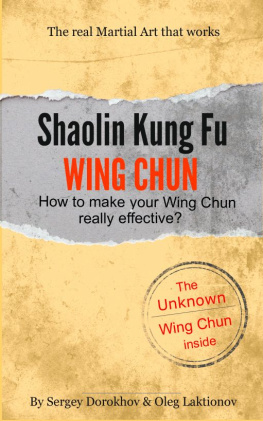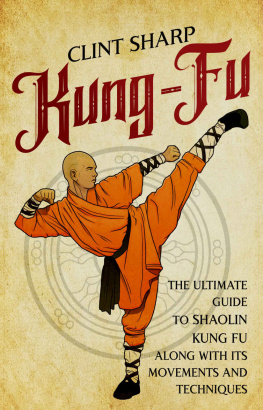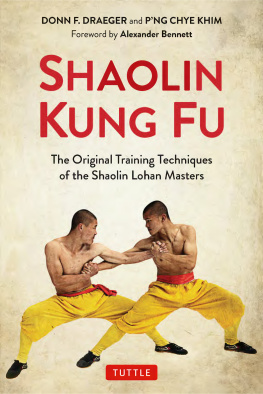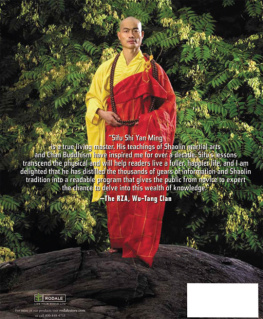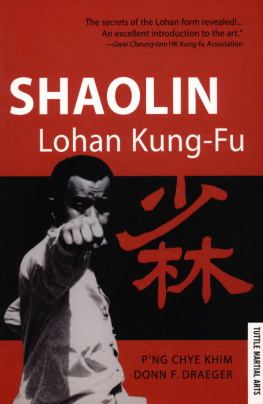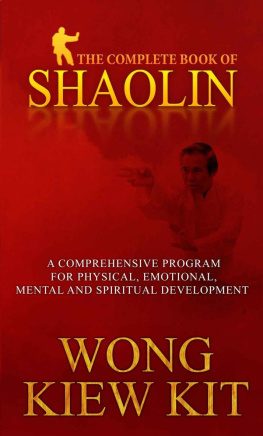Qingjie Zhou - Shaolin Quan: The 10-Minute Primer
Here you can read online Qingjie Zhou - Shaolin Quan: The 10-Minute Primer full text of the book (entire story) in english for free. Download pdf and epub, get meaning, cover and reviews about this ebook. year: 2011, publisher: Long River Press, genre: Religion. Description of the work, (preface) as well as reviews are available. Best literature library LitArk.com created for fans of good reading and offers a wide selection of genres:
Romance novel
Science fiction
Adventure
Detective
Science
History
Home and family
Prose
Art
Politics
Computer
Non-fiction
Religion
Business
Children
Humor
Choose a favorite category and find really read worthwhile books. Enjoy immersion in the world of imagination, feel the emotions of the characters or learn something new for yourself, make an fascinating discovery.

- Book:Shaolin Quan: The 10-Minute Primer
- Author:
- Publisher:Long River Press
- Genre:
- Year:2011
- Rating:5 / 5
- Favourites:Add to favourites
- Your mark:
- 100
- 1
- 2
- 3
- 4
- 5
Shaolin Quan: The 10-Minute Primer: summary, description and annotation
We offer to read an annotation, description, summary or preface (depends on what the author of the book "Shaolin Quan: The 10-Minute Primer" wrote himself). If you haven't found the necessary information about the book — write in the comments, we will try to find it.
Shaolin martial arts are gaining popularity in China and are based on the teachings of the once-mysterious Shaolin monks.
Shaolin Quan: The 10-Minute Primer — read online for free the complete book (whole text) full work
Below is the text of the book, divided by pages. System saving the place of the last page read, allows you to conveniently read the book "Shaolin Quan: The 10-Minute Primer" online for free, without having to search again every time where you left off. Put a bookmark, and you can go to the page where you finished reading at any time.
Font size:
Interval:
Bookmark:

Zhou ZhihuaZhou Qingjie
Long River Press
San Francisco
Copyright 2010 Qingjie Zhou. All rights reserved
Published in the United States of America by
Long River Press
360 Swift Avenue, Suite 48
South San Francisco, CA 94080
www.longriverpress.com
Published in Association with Foreign Languages Press, Beijing. No part of this book may be reproduced without written permission of the publisher.
10 9 8 7 6 5 4 3 2 1
Library of Congress Cataloging-in-Publication Data
Zhou, Qingjie.
Shaolin quan: 10 minute primer / Qingjie Zhou.
p. cm.
ISBN 978-1-59265-129-0
1. Hand-to-hand fighting, Oriental. I. Title.
GV1112.Z48 2010
796.815--dc22
2009036733
ISBN: 978-1-59265-129-0
 shoshow as in show er
shoshow as in show er
 lnlin as in lins eed
lnlin as in lins eed
 qunchuan, similar to the combination of chew and Ann
qunchuan, similar to the combination of chew and Ann

 | Contents |  |
Shaoln quan?
S haolin, also called Shaolin Quan (chuan) is known worldwide as the most influential and popular school of Chinese Wushu, or martial arts. Shaolin was formed gradually, combining the best characteristics of all the forms of martial arts known in China, each of which are steeped in ancient concepts of health, fitness, and the sharpening of mind/body/spirit. Also known as Shaolin kungfu, Shaolin Quan has become a powerful symbol of Chinese Wushu culture.
Shaolin Quan originated at the Shaolin Buddhist Monastery on Mount Shaoshi in the Songshan Mountains at Dengfeng, Henan Province. Its name literally refers to the forests on Shaoshi mountain. Nowadays, Shaolin Quan refers to the actual martial arts school at the Shaolin Temple, as well as the style of exercises done by the monks.

Hand-painted map of the Shaolin Temple
The birth of Shaolin Quan is often tied to a legend which holds that in 527 A.D., a Buddhist monk named Bodhidharma came from India to China to teach. After traveling through China, he finally settled down near the site of what was to be the future Shaolin Monastery. After sitting in silent meditation for the entire day, he found that his muscles and bones ached. As night fell, he had to guard against attacks from wild animals, as well as the hardships that come with severe cold and summer heat in the deep forest.
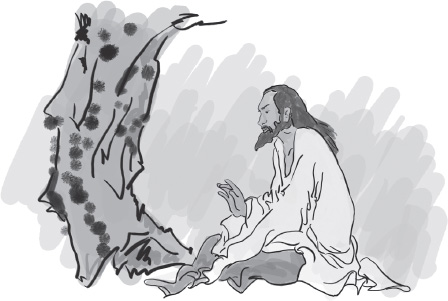
A painting of Dharma
The monk soon discovered that when he taught the Buddhist sutras, many of his disciples became listless after long hours of meditating in a lotus position. In order to invigorate them, to keep them vigilant against the elements, to keep them in good health, and to ultimately ensure the protection of the temple, he began to do some of the various exercises he witnessed on his travels. Often, these were based on the repetitive tasks of workers or farmers. Bodhidharma soon introduced his own method of rejuvenating the body to the monks. This was supposedly the earliest form of Shaolin Quan.
Modern scholars point to a more convincing version of the origin of Shaolin Quan that are generally held to be more faithful to history: many monks practicing Wushu were already adept at martial arts before they came to the Shaolin Temple. Disillusioned with Chinese society at that time, they shaved their heads and formed the major force for the creation and development of Shaolin Quan. Historians of Wushu unanimously believe that this form of martial arts was not created by one individual but was instead handed down by countless Wushu masters in China after centuries of fine-tuning and adaptation.

The entry signage of the Shaolin Temple
Shaolin Quan has a dual purpose: to integrate chan (or zen, as it is commonly known, a form of Buddhist meditation) and Quan (a form of martial arts), and to understand chan through the practice of Quan. Shaolin Quan is characterized by simplicity and practicality above all, which cane be manifest in its use of physical force and mental focus, often resulting in fierce blows and quick attacks. The perception of Shaolin Quan in the West has been enhanced by this fluid style, which often was seen as a sharp contrast to the rigid moves and routines of karate and judo, which were popular in America after WWII.
The life monks is restrained under the Buddhist disciplines, and monks in the Shaolin Temple who practice their martial arts exercises are no exception. They must abide by the Ten Disciplines for Practicing Wushu in Shaolin. These rules are evident in the style of the Shaolin Quan exercises, which combine restraint and modesty. The movements are typically more reserved, emphasize an acutely focused mental approach, are quick and effective, and follow the principle that one can attack only after being attacked (i.e. self-defense).
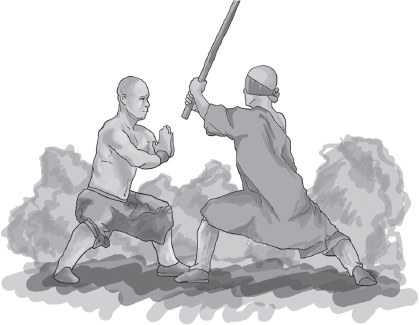
The movements of Shaolin gongfu are characterized by restraint, modesty, and striking after being attacked.

Shaolin Quan is also known as Kinna Quan. Legend has it that in the year 609 A.D., China was in turmoil and bandits roamed the land. One day a group of 10,000 thieves advanced on the Shaolin Temple, sending many of the monks running for their lives. Then an elderly monk who worked in the temples kitchen came out and shouted: Dont worry! Ill drive them away with my stick! The monks all laughed at him. The old monk picked up a short stick and lunged at the bandits. After a fierce battle, the frightened bandits ran away and the Shaolin Temple was safe. The monks were all convinced of the old monks powers and asked him to teach them his skills. So he called together more than a hundred young, able-bodied monks and showed them the basics of kung fu. This caught the attention of the martial arts monks.
The monks in the temple said amongst themselves that the old monk was the incarnation of Buddha Kinna, known to be a fighting Buddha within the Buddhist circle. Therefore, Shaolin Quan was also called Kinna Quan by the later generations. This legend can be found in some writings following this period.
THE WORLD
A ccording to one saying, Chinese kung fu astonishes the world, and the worlds kung fu comes from Shaolin. Indeed, as an important component of Chinese Wushu, Shaolin Wushu has long been known worldwide for its power and the extensive physical and mental understanding required to master it. Shaolin Wushu is named after the temple, and the temple has become known around the globe for martial arts. Shaolin disciples now are all over the world, and Shaolin Wushu is extremely popular both at home and abroad, even to the point where acrobatic and martial arts shows by Shaolin monks are performed live on stage in some countries. To date the temple has attracted thousands of visitors from around the globe.
Next pageFont size:
Interval:
Bookmark:
Similar books «Shaolin Quan: The 10-Minute Primer»
Look at similar books to Shaolin Quan: The 10-Minute Primer. We have selected literature similar in name and meaning in the hope of providing readers with more options to find new, interesting, not yet read works.
Discussion, reviews of the book Shaolin Quan: The 10-Minute Primer and just readers' own opinions. Leave your comments, write what you think about the work, its meaning or the main characters. Specify what exactly you liked and what you didn't like, and why you think so.

